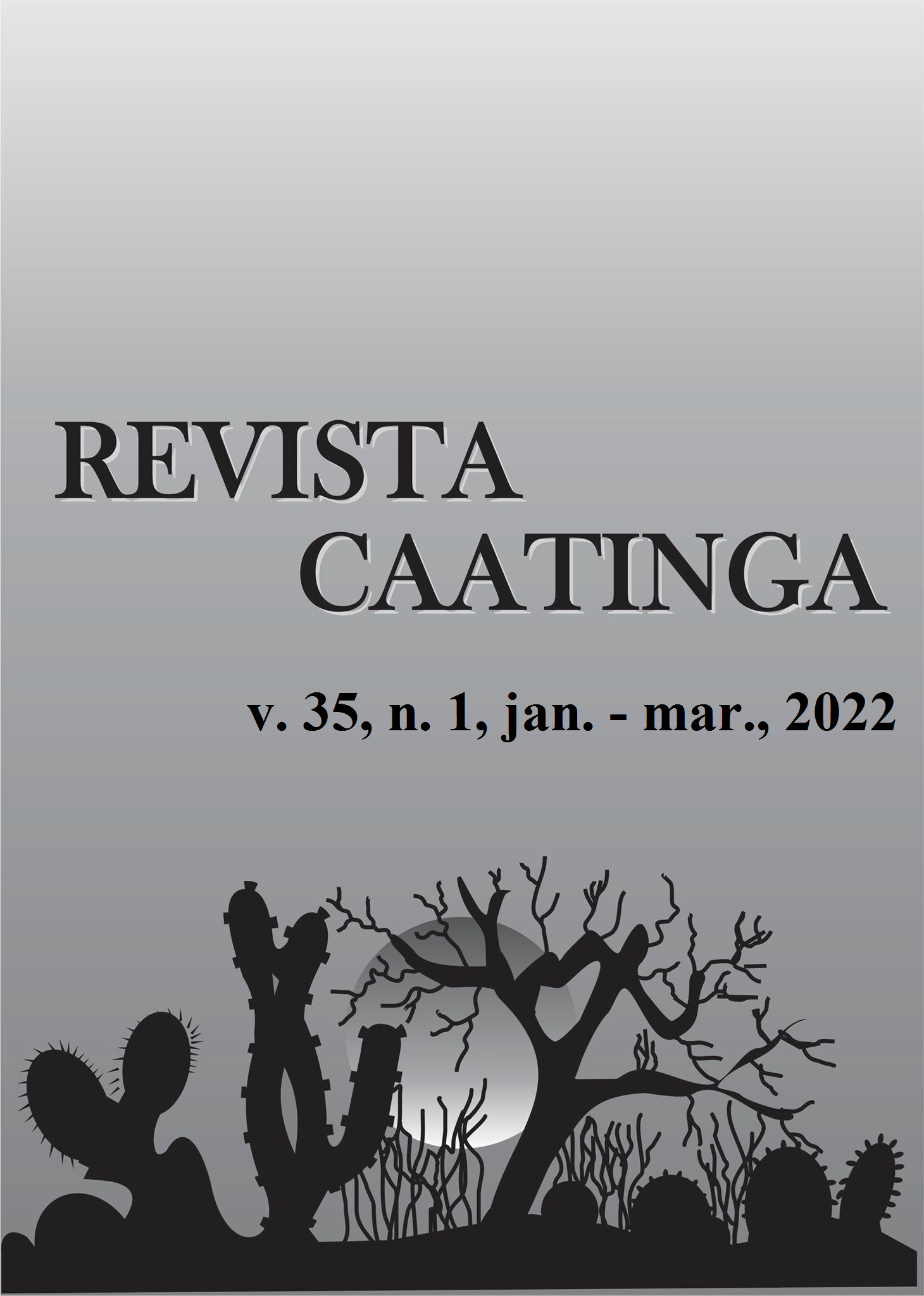ASSESSMENT OF SUBSTRATE SOLUTION EXTRACTION METHODS FOR DETERMINATION OF CHEMICAL ATTRIBUTES IN SOILLESS CULTURE OF BELL PEPPER AND MELON
DOI:
https://doi.org/10.1590/1983-21252022v35n112rcKeywords:
Capsicum annuum L.. Cucumis melo L.. Aqueous extract. Plant nutrition.Abstract
The aim of this study was to evaluate the efficiency of the porous ceramic cup extractors, associated with ion meters, for the determination of nutrients availability for bell pepper and melon crops in substrate. Substrate solution was acquired using aqueous extract 1:1.5 (v/v) and also the porous ceramic cup extractor. Electrical conductivity (EC), pH and macronutrient contents were determined for the substrate solution through analytical method. The concentrations of NO3- and K+ in the solutions obtained with porous ceramic cup extractors, and the N and K contents in the diagnostic leaf for nutritional evaluation were also determined. The concentrations of NO3- and K+ using the porous ceramic cup extractors have strong correlation (r=0.96 and 0.92, respectively) with the ones obtained using the standard method, as well as a moderate correlation (r=0.65) and a strong one (r=0.71) with contents of N and K, respectively, in the melon diagnostic leaf; and a weak correlation (r=0.36 and 0.26, respectively) in the bell pepper diagnostic leaf. The use of porous ceramic cup extractors for obtaining the substrate solution and the determination of the N-NO3- and K+ contents by means of specific ion meters are a fast method of evaluating nutrients availability in soilless cultures.
Downloads
References
ABREU, M. F. et al. Extração de substratos para obtenção da concentração de micronutrientes disponíveis para a rúcula. Horticultura brasileira, 5: 411-417, 2007a.
ABREU, M. F. et al. Extratores aquosos para a caracterização química de substratos para plantas. Horticultura Brasileira, 25: 184-187, 2007b.
APHA - American Public Health Association; AWWA - American Water Works Association; WEF - Water Environment Federation. “4500-NO3− NITROGEN (NITRATE)”, Standard Methods For the Examination of Water and Wastewater. 2018. Disponivel em: https://www.standardmethods.org/doi/suppl/10.2105/SMWW.2882.089#. Acesso em: 10 ago. 2021.
BLANCO, F. F. Manual de construção e utilização de extratores de cápsula porosa para obtenção da solução do solo. 1. ed. Teresina, PI: Embrapa Meio-Norte, 2006. 36 p. (Documentos, 142).
FERMINO, M. H. Substratos: composição, caracterização e métodos de análise. Guaíba, RS: Agrolivros, 2014. 112 p.
FURLANI, P. R. et al. Cultivo hidropônico de plantas. Campinas, SP: Instituto Agronômico, 1999. 52 p. (Boletim Técnico, 180).
GAVILÁN, M. U. et al. Effects of Fertigation Duration on the Pollution, Water Consumption, and Productivity of Soilless Vegetable Cultures. HortScience, 50: 816-825, 2015.
GRATIERI, L. A. et al. Nitrogen and potassium concentrations in the nutrients solution for melon plants growing in coconut fiber without drainage. Scientific World Journal, 2013: 1-10, 2013.
JIMÉNEZ, S.; PLAZA, B. M.; LAO, M. T. Nutrient solution and nutrient soil solution parameter evolution in tomato with dynamic fertigation under saline conditions. Communications in Soil Science and Plant Analysis, 43: 265–271, 2012.
MARQUES, G. N. et al. A solução drenada pelo substrato pode ser empregada no monitoramento da condutividade elétrica e do pH no cultivo do morangueiro. Pesquisa Agropecuária Gaúcha, 26: 92-100, 2020.
MOTA, P. R. D. A. et al. Avaliação do pH e da condutividade elétrica do substrato sob níveis de fertirrigação e métodos de extração da solução. Revista Brasileira de Horticultura Ornamental, 17: 121-126, 2011.
MOTA, P. R. D. A. et al. Portable meters for nutritional assessment in plants of gerbera fertigated with electrical conductivity levels. Revista Brasileira de Engenharia Agrícola e Ambiental, 18: 258-262, 2014.
NOWAKI, R. H. D. et al. Effect of nitrogen fertilization on yield and quality of watermelon, cv. Top Gun. Revista Caatinga, 30: 164-171, 2017.
OLIVEIRA, F. A. et al. Calibração de extratores providos de cápsula porosa para monitoramento da salinidade e da concentração de íons. Engenharia Agrícola, 31: 520-528, 2011.
OLIVEIRA, F. A. et al. Manejos da fertirrigação e doses de N e K no cultivo de pimentão em ambiente protegido. Revista Brasileira de Engenharia Agrícola e Ambiental, 17: 1152-1159, 2013.
OLIVEIRA, F. A. et al. Nutrição mineral do pimentão submetido a diferentes manejos de fertirrigação. Horticultura Brasileira, 33: 216-223, 2015.
PARDOSSI, A. et al. Fertigation and Substrate Management in Closed Soilless Culture. Pisa: University of Pisa. 2011. 63 p.
SAMBO, P. et al. Comparison of Different Methods to Extract Soil-Water from Containerized Substrates. Acta Horticulturae, 922: 369-374, 2011.
SOUZA, E. R. et al. Comparação de métodos de extração da solução do solo. Revista Brasileira de Engenharia Agrícola e Ambiental, 17: 510-517, 2013.
WAMSER, A. F. et al. Influence of drainage and nutrient-solution nitrogen and potassium concentrations on the agronomic behavior of bell-pepper plants cultivated in a substrate. PloS ONE, 12: e0180529, 2017.
WRIGHT, R. D. et al. Monitoring nutrients in large nursery containers. 2009. Disponível em: <https://www.pubs.ext.vt.edu/430/430-070/430-070.html>. Acesso em: 11 jun. 2019.
YONG-BEOM, L.; EUN-YOUNG, C.; KI-YOUNG, C. Scheduling Non-drainage Irrigation in Coir Substrate Hydroponics with Different Percentages of Chips and Dust for Tomato Cultivation using a Frequency Domain Reflectometry Sensor. Protected Horticulture and Plant Factory, 22: 248-255, 2013.
Downloads
Published
Issue
Section
License
Os Autores que publicam na Revista Caatinga concordam com os seguintes termos:
a) Os Autores mantêm os direitos autorais e concedem à revista o direito de primeira publicação, com o trabalho simultaneamente licenciado sob a Licença Creative Commons do tipo atribuição CC-BY, para todo o conteúdo do periódico, exceto onde estiver identificado, que permite o compartilhamento do trabalho com reconhecimento da autoria e publicação inicial nesta revista, sem fins comerciais.
b) Os Autores têm autorização para distribuição não-exclusiva da versão do trabalho publicada nesta revista (ex.: publicar em repositório institucional ou como capítulo de livro), com reconhecimento de autoria e publicação inicial nesta revista.
c) Os Autores têm permissão e são estimulados a publicar e distribuir seu trabalho online (ex.: em repositórios institucionais ou na sua página pessoal) a qualquer ponto antes ou durante o processo editorial, já que isso pode gerar alterações produtivas, bem como aumentar o impacto e a citação do trabalho publicado (Veja O Efeito do Acesso Livre).







